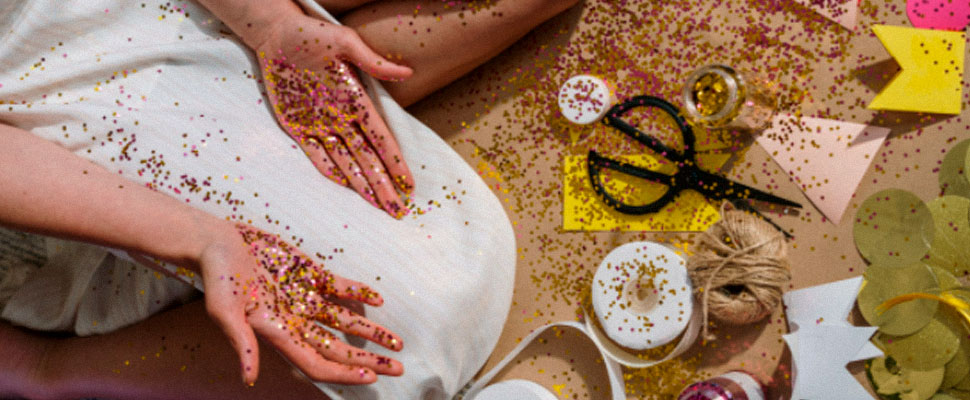Have You Heard of Eco-Friendly Glitter?
We all know by now that glitter is microplastic, conventionally made from aluminum and plastic. The good news is that a new biodegradable alternative could change that!.

The Woman Post | Catalina Mejía Pizano
Listen to this article
Glitter has been sold in large quantities, just for fun, serving no other purpose than the amusement of kids or decoration. But why is it dangerous? The small size of its plastic particles makes glitter a hazard to bodies of water since it is frequently consumed by marine animals and can even end up in the seafood that we eat. The good news is that a new biodegradable alternative could change that!
During the year 2019, scientists suggested a total ban on glitter, since they were deeply concerned with the fact that these small particles were harming the oceans and their wildlife. Additionally, several laboratory tests confirmed that every type of glitter potentially affected the growth of pond plants and microscopic algae. Let's now look at the components of traditional glitter, to find out how it affects the environment. Conventional glitter is made of a plastic core of polyester PET film, coated with aluminum and then with another thin layer of plastic. However, there are other versions of glitter. The Woman Post will tell you more about an innovative type of biodegradable glitter, that could change the story!
If you are wondering where an eco-friendly glitter can get its colors from? the short answer is from plants. Diminutive arrangements in cellulose can reflect light in specific ways to give rise to a colorful palette. But there is even more good news to this story! Researchers have confirmed that cellulose can be used to produce eco-friendly glitter and shiny pigments, or even for cosmetics and packaging. Chemist Silvia Vignolini from the University of Cambridge explained that the inspiration to use cellulose, came from the African plant Pollia Condensata, sometimes called the marble Berry, which produces shiny metallic blue fruits. For this purpose, minuscule patterns of cellulose fibers in the berries’ cell walls, create the color by reflecting specific wavelengths of light.
Also read: LET'S START 2022 AVOIDING FOOD WASTE
Based on the mechanism of the African plant Pollia Condensata, Vignolini and colleagues poured a watery mixture of cellulose fibers into plastic, and when it dried up, the fibers settled and took the form of helical spirals which resembled spiral staircases. The color of the film varied according to the wavelengths of light that were reflected. The described process worked magically to transform ribbons into vibrant colored palettes. These swaths may be peeled out of the plastic platforms, to make eco-friendly glitter.
Bearing in mind that there are several types of cellulose, it is worth highlighting that eco-friendly glitter can be made using any type. For instance, Vignolini’s team worked with cellulose from Wood pulp, but she remarked that they could have used fruit peels or cotton fibers leftover from textile production. Although there is still room for research regarding the possible environmental effects of the new glitter, scientists are optimistic that cellulose-based glitter will turn out to be more friendly than the conventional one, when it comes to taking care of the planet!




